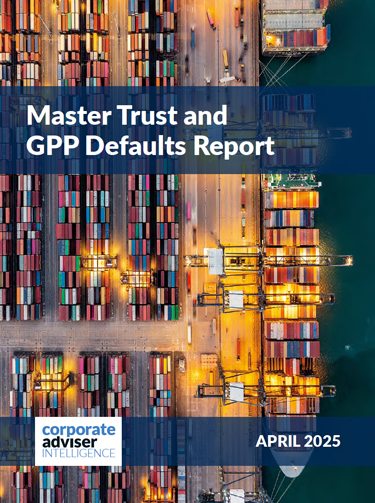Group income protection (GIP) delivers a cost-effective way of supporting employee health and addressing sickness absence. But, while the latest figures show the market is still growing, a product rethink could address fears around future performance.
There are plenty of positives in Swiss Re’s Group Watch 2025. The number of policies in force increased by 2.9 per cent in 2024, with 3.38m people now covered. “Movement in the GIP figures always used to be around 1 per cent, either up or down, but we’ve seen much stronger growth over the past five years,” explains Ron Wheatcroft, technical manager at Swiss Re and co-author of the report. “But there are growing concerns the market will falter in the coming years.”
Reasons to be fearful
Nearly one in 10 (9.6 per cent) respondents to the Swiss Re report believe sales will fall in 2025. While still a low level of pessimism, it’s concerning that it’s more than double the figure – 4.7 per cent – from a year ago.
Fears are based on a couple of different factors. First, there are the financial pressures. “Employers are facing additional costs this year due to increases in national insurance and the national living wage,” says James Walker, head of product & proposition – group protection at L&G Retail. “And with economic
growth low, there’s not a lot of money to spend.”
With budgets tight, Wheatcroft expects GIP will be the likely target for cost-cutting. “Life insurance is low-cost and critical illness is largely employee-paid; savings are more likely to come from GIP, perhaps through the continued trend of shortening the benefit term,” he says. “It’s disappointing but it’s an easy place to make cuts.”
Perception matters
Another factor making the sector nervous about future sales is the way employers perceive GIP alongside other health and wellbeing benefits. Long waiting lists and difficulties accessing NHS services have boosted the perceived value of medical insurance with some advisers seeing employers cut GIP to cover rising premiums.
David Williams, head of group risk at Towergate Employee Benefits, isn’t surprised that employers are making this decision. “It’s frustrating but employers do see GIP as an insurance product rather than a business management tool,” he explains. “I liken it to the annual maintenance contract that’s in place for a widget machine: it helps keep employees working and well.”
The fact that GIP claims are few and far between also makes it a more compelling candidate for a cut. But these low levels of claims are a good news story, as Saumya Barber, head of proposition development at Unum, explains: “GIP has evolved to be more of a claims prevention service. Today, through the integration of absence management services, 97 per cent of employees are able to return to work.”
This is supported by data from Group Risk Development (Grid). It found that 72 per cent of potential GIP claimants who were referred to insurers in 2024 had returned to work by the end of the year. Of these, 4,994 were able to go back to work before reaching the end of the deferred period as a result of interventions provided by the insurer.
Evidencing value
Against a backdrop of increased employer costs, there is a real need to demonstrate why GIP is such an important product. “The product works well but it needs remarketing,” says Ed Watling, head of health and wellbeing at Mattioli Woods. “It’s not about income replacement; it’s about employee support and reducing the potential for claims. All the ancillary benefits are more important than the financial support.”
With the low level of claims belying the true value of GIP, return on investment figures that reflect all the services included on the product could help. Stephen Jarrett, principal and group risk proposition lead at Gallagher, says these would be useful, especially with finance directors. “Unfortunately, there’s no magic wand when it comes to getting these figures,” he adds. “Insurers can report on cases
that are resolved through early intervention services but rules around anonymising the data mean this is only possible for larger employers.”
Barber also recognises the need to demonstrate value more effectively. Unum reports on return to work cases but also launched an online employer claims portal in 2024 to make the benefits of cover more visible. “This contains all the details of claims but also early referrals to absence management services,” she explains. “We’re often dealing with employees who are still in work and struggling so it’s important to highlight this support to employers.”
Supporting employees
The added-value health and wellbeing services for employees are another key part of the GIP proposition. These include employee assistance programmes, virtual GPs and health and wellbeing information hubs.
These services support the overall approach of looking after employee health and reducing the potential for long-term absence. “They used to be nice-to-haves but they’re such a big part of the proposition now,” says Barber. “They’re critical.”
But they could also be adding to GIP’s woes. As these add-ons are commonplace across every health and protection products, there is a risk they might fuel an employer’s decision to scrap cover in favour of another plan.
The dangers of this duplication resurfaced as a concern in Group Watch 2025. “Everyone is really positive about these services but less so about the prospect of paying for them multiple times,” says Wheatcroft. “Offering them on a menu basis is a popular idea but the difficulty with making them optional is that it can create a tax liability.”
Product rewrite
Tinkering with added-value services may help to persuade some cash-strapped employers to stick with GIP but a more fundamental overhaul of the product could still be a way forward.
The government’s Keep Britain Working Review is looking at how employers can prevent people from falling out of work due to ill-health. Although it’s unlikely to deliver any tax breaks for employers providing GIP, it could benefit sales by putting vocational rehabilitation more squarely in employers’ minds.
Jarrett says that demand for these services could potentially lead to GIP insurers offering a cut-down product, providing all the early intervention and health and wellbeing services without the financial safety net.
“I’d also like to see employees being able to access early intervention services without an employer referral. This could be pathway driven to ensure they access the most appropriate services, but it could boost the effectiveness of the approach.”
Communication exercise
Whether or not GIP gets a much-needed boost from the government review, the sector does need to do more to ensure everyone understands the role it has in keeping people well and in work. “We need to push it more,” says Williams. “Lots of employers think they don’t need it as they focus on the financial element but the early intervention and health and wellbeing services can really help them improve absence.”
Better communications are also essential for existing clients. Williams would like to see more focused onboarding of employers. “Some insurers are great at this but it’s important that awareness of all the product’s benefits are kept as high as possible.”
As an example, to improve product awareness, Unum has changed the way it works with employers. “We work with more people now to highlight the value of the product,” says Barber. “This includes HR, line managers and the wellbeing champions: the more people within an organisation that understand how GIP works, the better.”





